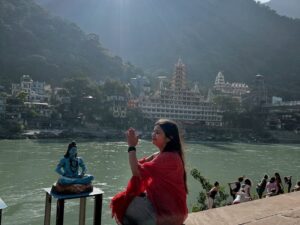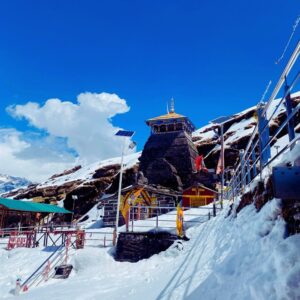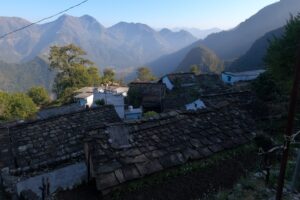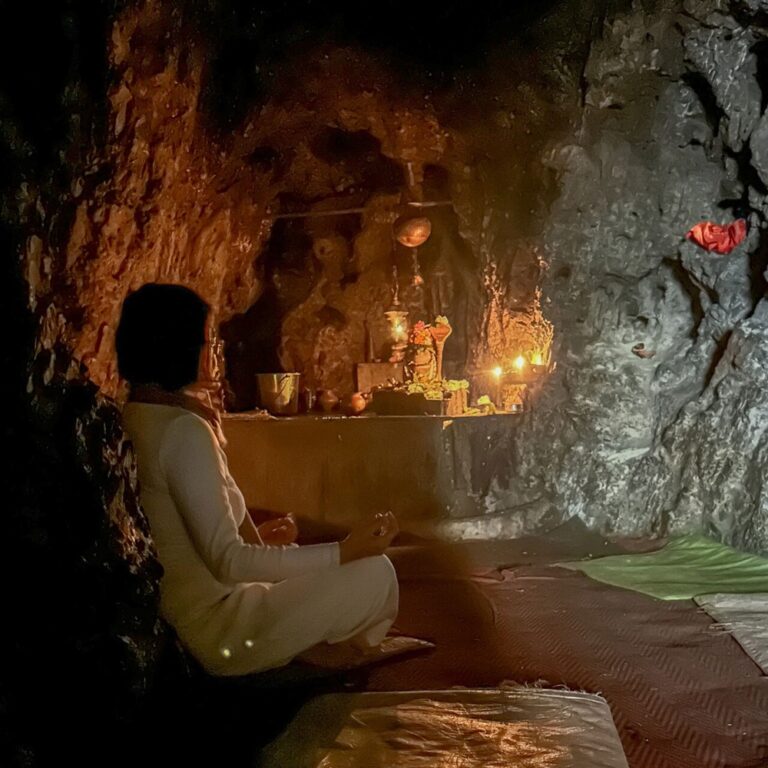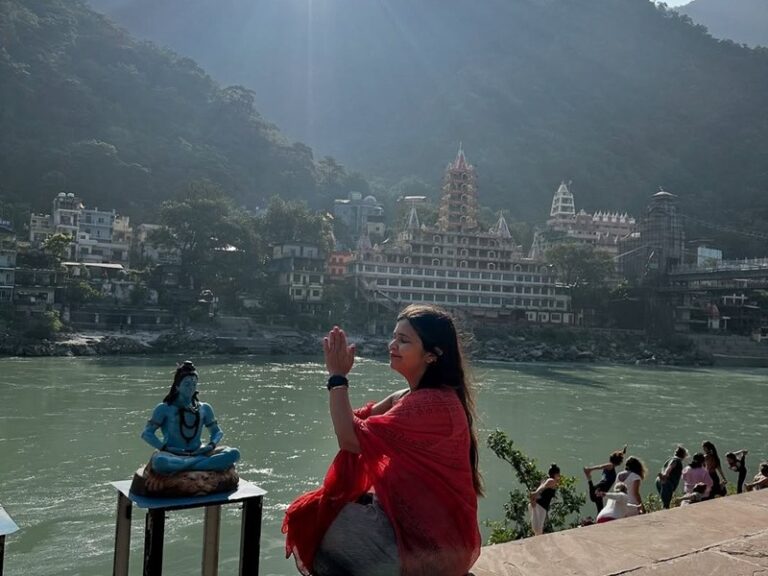Discover Ayodhya Uttar Pradesh India: The Birthplace of Sri Ram
Ayodhya Uttar Pradesh India: A city steeped in ancient history and spirituality, is famous as the birthplace of Sri Ram, the seventh incarnation of Vishnu. Ayodhya settles along the serene banks of the river Saryu. Ayodhya Uttar Pradesh India is a sacred destination, one of the seven Mokshdayini Saptpuris in Hinduism. This legendary city allures spiritual seekers with its picturesque Ghats, splendid temples, and mesmerizing Saryu River Aarti.
Notably, Ayodhya’s significance transcends Hinduism, as it is also mentioned in Jain and Buddhist scriptures. It is believed to be the birthplace of five of the 24 Jain Tirthankaras, referred to as Ikshvakubhumi in Jain writings.
Ancient Kingdom
Ayodhya’s historical importance is undeniable, serving as the capital of the ancient Kosala Kingdom and witnessing the rule of illustrious dynasties, including the Suryavanshi kings of the Ikshvaku dynasty, Mauryan, Nanda, and Gupta empires. This city’s rich tapestry of faith and history continues to captivate pilgrims and visitors alike.
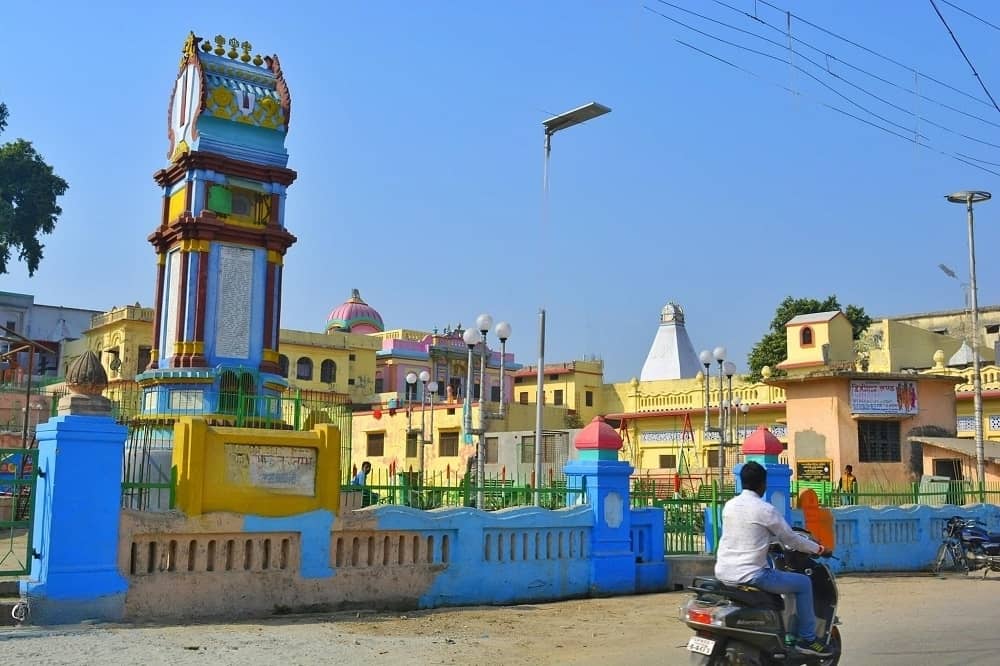
Famous Temple
Ayodhya offers solace and hope with revered temples like Ayodhya Hanuman Garhi and Nageshwarnath Temple. It’s a hub for sacred parikramas, and its mesmerizing evening aarti on the Saryu riverbanks and the Ram Leela enactment at Tulsi Smarak are major attractions.
Diwali in Ayodhya
During Deepawali, Ayodhya dazzles with brightly-lit lamps as visitors from across India gather at its Ghats. The colorful procession in honor of Sri Ram, featuring folk dance performances, is a must-see.
Despite its challenges, Ayodhya remains a magnet for devotees. The construction of Ram Janmabhoomi promises to restore its prosperity, making it a pilgrimage destination comparable to Varanasi and Mathura.
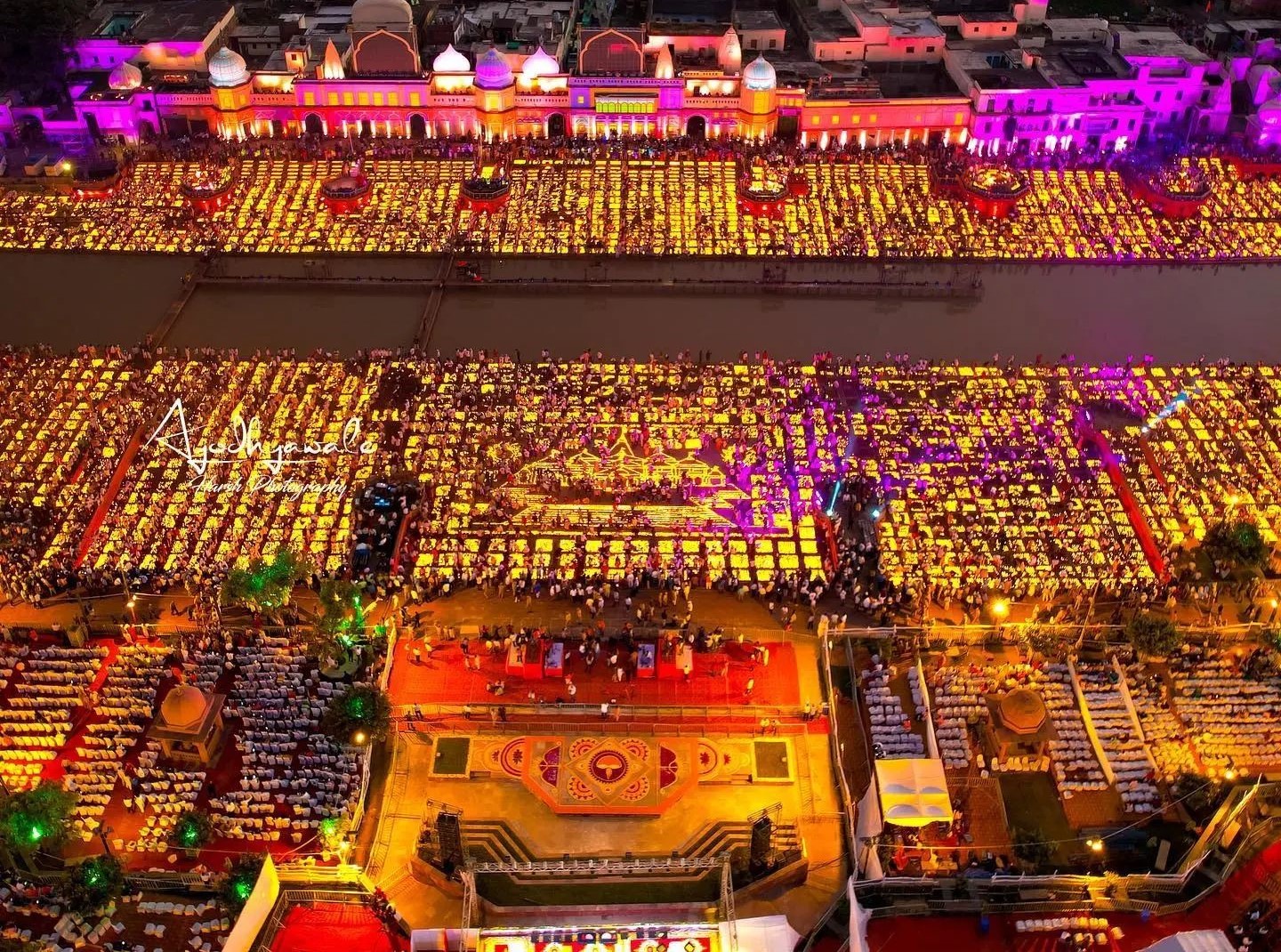
Ram Janmabhoom
The historic Supreme Court verdict on the Ram Janmabhoomi land dispute has brought joy to millions of Ram devotees worldwide. Ayodhya is poised to shine on the world tourism map, with the government’s focus on preserving its historical glory. The city is undergoing a significant transformation, with plans to develop the Ram Janmabhoomi, revamp Ayodhya Dham, and enhance Ayodhya’s overall appeal as a sacred Hindu destination.
Ram Temple in Ayodhya
The forthcoming Ram Temple in Ayodhya will be an imposing structure, reaching a height of 161 feet, supported by 318 intricately carved pillars featuring Hindu deities. It will span 140 feet in width and occupy a vast 69-acre area, providing multiple prayer spaces for devotees.
The temple’s design will accommodate a parikrama around the sanctum sanctorum and include significant features like Singh Dwar, Garbhagriha, Nritya Dwar, and Ranga Mandapa. Additionally, plans are in place for the construction of a cowshed, resthouse, Vedic institute, and other religious buildings nearby.
A spiritual eco-city named Ikshvakupuri, inspired by Cambodia’s Angkor Wat, will be established in Ayodhya along the banks of the river Saryu, promoting India’s Vedic culture to spiritual enthusiasts from around the world. This endeavor will solidify Ayodhya’s position on the global map of spiritual tourism.

Ayodhya Airport
To ensure top-notch connectivity to the temple town, various infrastructure projects are underway. This includes the Ayodhya Airport for international access, modernization of the Ayodhya railway station, and the construction of an International Bus Terminal. Furthermore, road expansion projects will facilitate seamless travel between Ayodhya and neighboring cities.
Ayodhya is a special place in India because it’s where the famous story of Lord Ram from the Ramayana took place. People know Ayodhya because it’s where Lord Ram was born, and there are many stories and history connected to him here.
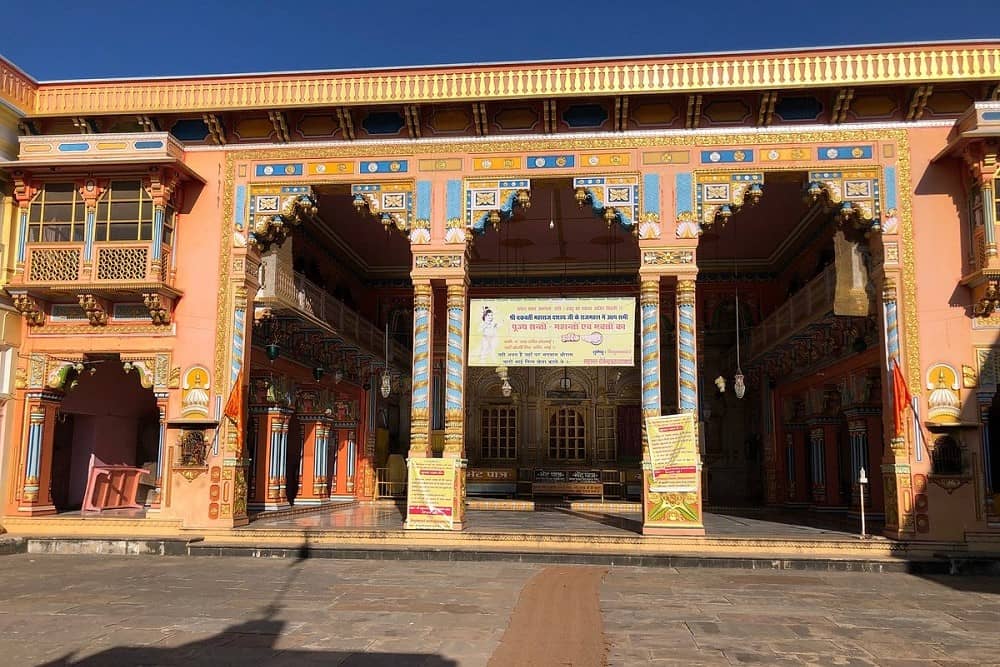
History of Ayodhya Uttar Pradesh India
The city’s name Ayodhya come from King Ayudh, an ancestor of Lord Ram. According to the Ramayana, the sage Manu founded the city with the blessings of Lord Vishnu, and it was ruled by the Surya dynasty of the Ikshvakus. Initially known as Saket. it eventually adopted the name Ayodhya.
Despite its name, which means “not to be warred against,” Ayodhya has faced religious strife and foreign attacks throughout its history. It resisted Mahmud Ghaznavi’s nephew Salar Masud in the 11th century, and Mughal emperor Babur issued a decree for a mosque’s construction when he conquered northern India in 1526.
In the 18th century, the Nawabs of Awadh established a kingdom in Ayodhya, but it later fell into neglect and ruin when their capital moved to Lucknow. Post-independence politics thrust Ayodhya into the spotlight, leading to the recent allocation of the site to the Hindu community for a grand temple complex dedicated to Lord Ram.
Beyond Hinduism
Beyond its Hindu significance, Ayodhya holds importance for Buddhists, Jains, and Sikhs. Buddha spent time here, and five Jain Tirthankaras were born in the city. Sikh Gurus, including Guru Nanak Dev, visited Ayodhya to spread their spiritual teachings.
Ayodhya also has a cosmopolitan connection dating back to 48 CE when a local princess named Suriratna sailed to Korea with a large group of people. Her story led to South Koreans considering Ayodhya their maternal home. A memorial to the queen was built in Ayodhya using stones from South Korea in 2001.
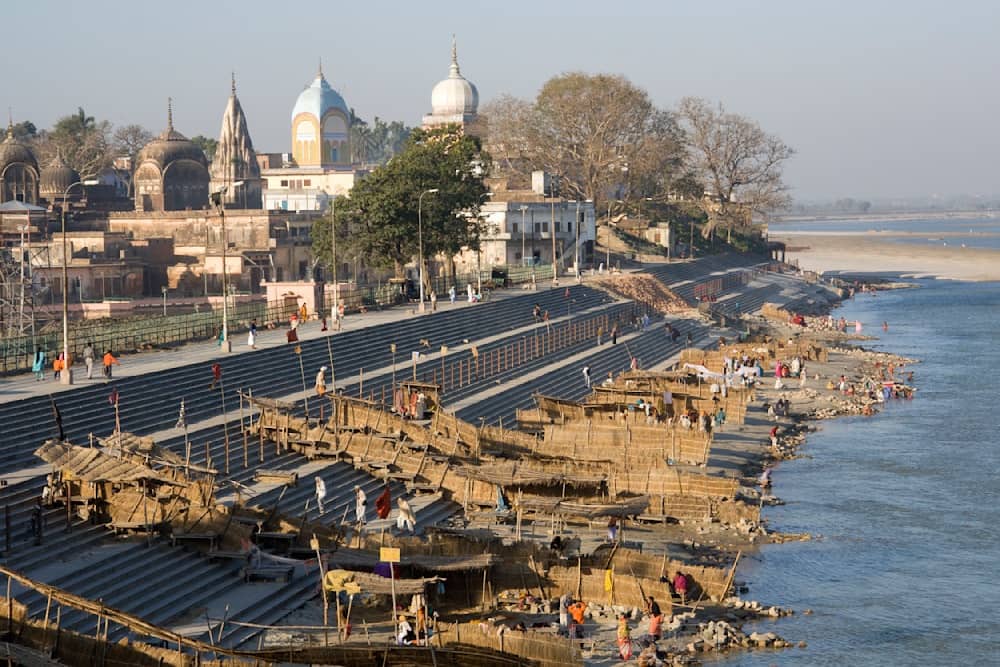
Ramcharitmanas
Ramcharitmanas, authored by the celebrated Indian poet Goswami Tulsidas, stands as a monumental ode to the life and times of Lord Shree Rama. It translates to the “splendid lake of the deeds of Shree Ram” and holds a paramount position in Ramayana literature due to Tulsidas’ poetic brilliance.
Divided into seven parts or Kands, namely Bal Kand, Ayodhya Kand, Aranya Kaand, Kishkindha Kand, Sunder Kand, Lanka Kand, and Uttar Kand, the Ramcharitmanas comprises 12,800 lines across 1,073 stanzas. The text includes nine main stops and 30 substops called Vishrams, making it reader-friendly.
Legend has it that Hanuman appeared to Tulsidas in Prayagraj, instructing him to go to Chitrakoot, where he would meet Lord Rama. Tulsidas began writing the Manas on Ram Navami in 1574, completing it in two years, seven months, and 26 days.
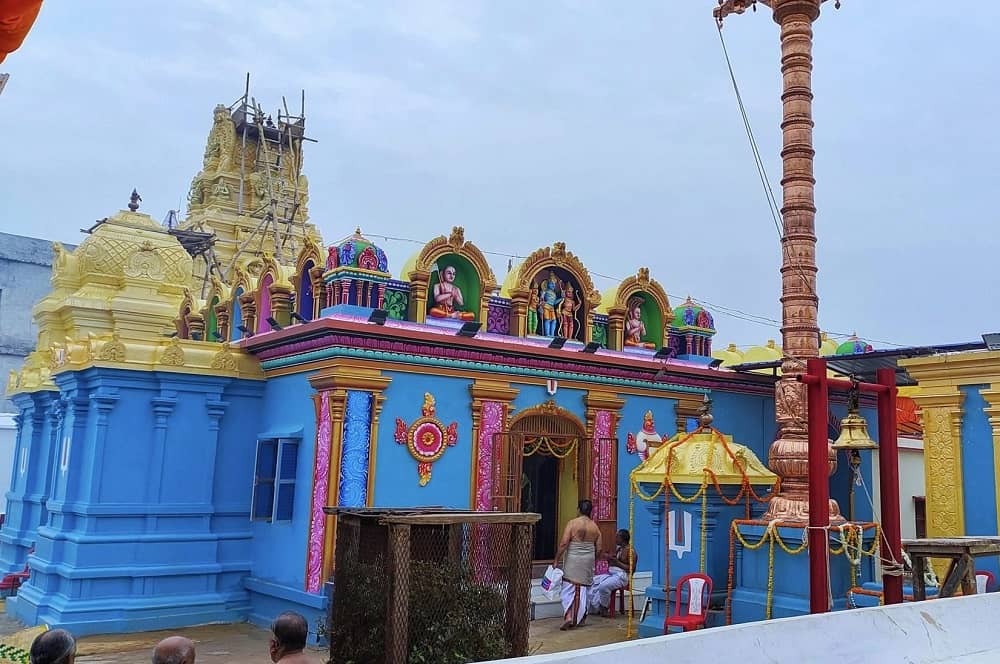
What sets the Ramcharitmanas apart is Tulsidas’ unwavering devotion to Lord Rama, making it a remarkable work of world literature. Mahatma Gandhi hailed it as the greatest book in devotional literature, describing it as “the tallest tree in the magic garden of medieval Hindu poetry” in his autobiography.
The Ramcharitmanas is not merely an ancient scripture but a way of life. It offers guidance and solace in various life situations, from education and career to personal struggles and spiritual enlightenment. Written in Awadhi, it was an intentional effort to bring devotional literature to the masses in their own language.
Tulsidas
Tulsidas addressed contemporary social issues in the Manas. The text imparts wisdom on personal, social, and ethical matters, emphasizing the importance of moral duties even in adverse circumstances and promoting qualities like friendship and respect for adversaries.
The Ramcharitmanas has been a source of hope and guidance throughout history and, if embraced by today’s society, has the potential to elevate India to a world leader.
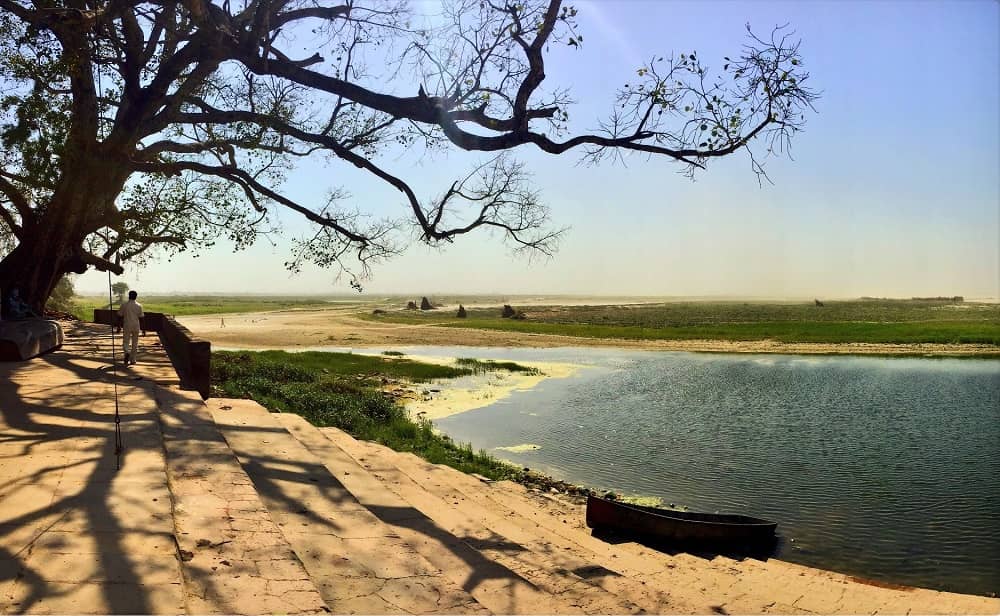
Saryu River
The Saryu River, also known as Saryuji, holds great significance in Hindu mythology and is one of the divine Sapt Gangas, or Seven Gangas, along with rivers like the Saraswati, Ganga, and Yamuna. In the epic Ramayana, the Saryu is repeatedly mentioned as a sacred river. Ayodhya city is on the banks of this revered river, is one of the seven holiest cities in Hinduism. It is the birthplace of Lord Sri Ram.
Many temples and shrines dedicated to various deities can be found on both banks of the Saryu, and these are accessed through clusters of Ghats. The river plays a central role in various rituals and ceremonies performed by devotees. The Saryu is surrounded by legends related to Lord Shree Ram and his family.
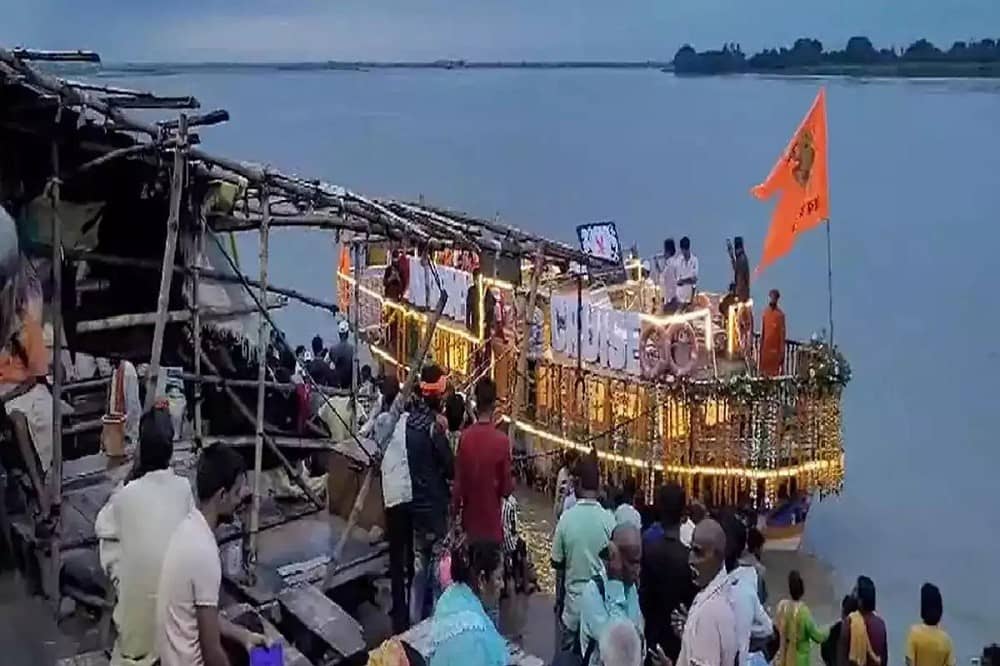
Legends of Saryu River
One legend states that Sage Vasishtha brought the Saryu to Ayodhya from Lake Mansarovar at the request of the people. According to the Ramayana, Lord Shree Ram himself heard the story of the river’s origin from Sage Vishwamitra while crossing it in the Anga province.
The Saryu originates as a small stream in the Tibetan Plateau from Lake Mansarovar, gradually merging with other streams and rivulets to become the perennial Ghagara River. It eventually joins the Sarda River in Uttar Pradesh and later flows into the Ganga in Bihar, making it a crucial tributary of the Ghagara.
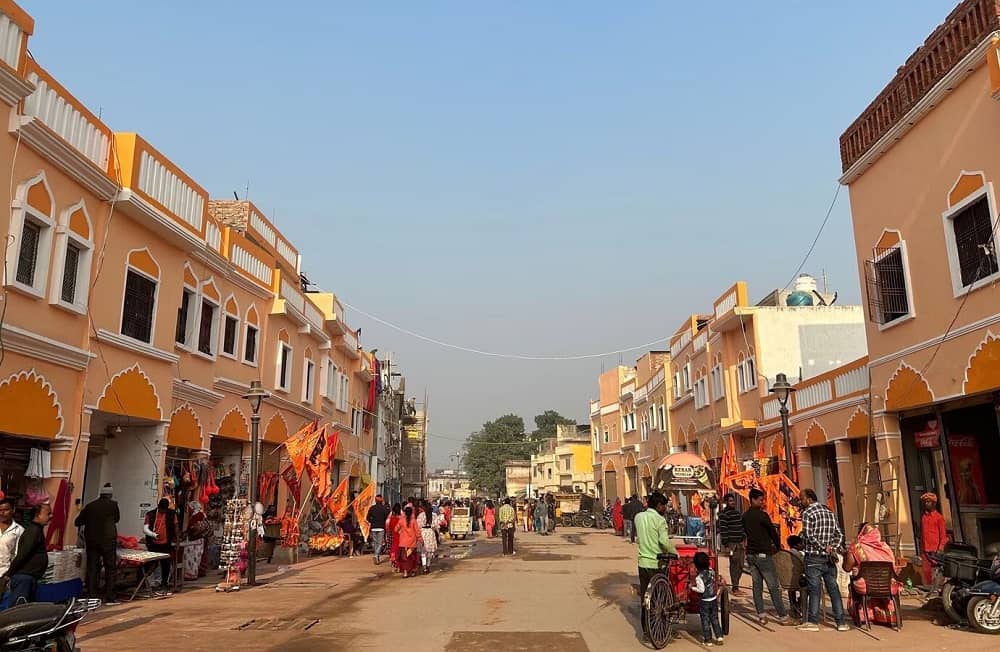
Ayodhya Dham
Ayodhya, which includes Ayodhya Dham and Ayodhya, is situated along the Saryu’s banks. These twin cities, a few kilometers apart, are rich in Ganga-Jamuni Tehzeeb or syncretic culture.
The Saryu has deep spiritual and historical connections with Lord Shree Ram and his family. It was a constant companion in Sri Ram’s childhood, where he would play, swim, participate in rituals, and enjoy festivities on its banks. Several significant events, such as the receipt of the Bala and Atibala mantras from Sage Vishwamitra, occurred near the Saryu.
The river also played a role in tragic incidents, like the accidental killing of Shravan Kumar by King Dashratha, leading to a curse. In his old age, Dashratha’s earlier act came back to haunt him when he had to send Shree Ram into exile for 14 years.

Saryu Ghats
The Saryu Ghats, such as Swargadwar Ghat, Laxman Ghat, and Janaki Ghat, are filled with devotees, especially during festivals like Dussehra, Diwali, and Ram Navami. The Ghats serve as venues for various purification rituals and spiritual activities.
Mokshdayini Saptpuris
Ayodhya is revered as one of the seven Mokshdayini Saptpuris, or the seven noble tirthas for Hindus. Pilgrims start their journeys by taking a sacred bath in the Saryu and performing rituals to break moral bondage, concluding their pilgrimage with the release from this bondage.
Tulsi Smarak Bhawan
The Tulsi Smarak Bhawan in Ayodhya honors the poet-philosopher Goswami Tulsidas. It is famous for his work, the Ramcharitmanas. This building hosts religious ceremonies, cultural performances, and art exhibitions, including the works of Tulsidas.

Ayodhya Research Institute
The Ayodhya Research Institute, established in 1986, aims to research Ayodhya’s historical significance, Vaishnavism, and the Bhakti movement. It is working on ‘Encyclopaedia of Ramayana’ and seeks to trace Lord Sri Ram’s global footprint, collaborating with countries worldwide.
Ram Katha Museum
Ayodhya also houses the Ramkatha Museum, displaying antiquities dating back to ancient times, including terracotta objects, metal exhibits, textiles, and sculptures. A special gallery showcases the belongings of Gumnami Baba, believed by some to be Netaji Subhas Chandra Bose in disguise during his time in Ayodhya.
Sitaram’ kirtan
In Ayodhya, the tradition of ‘Sitaram’ kirtan holds a profound and enduring place in the city’s cultural fabric. This tradition of congregational chanting of ‘Sitaram’ continues in various temples during festivals like Ramnavami, Sharad Poornima, Jhulanotsav, Dev Deepavali, and Holi in Ayodhya Uttar Pradesh India.
This iconic practice takes place in temples such as Kanak Bhawan, Sadguru Sadan, Rangmahal Mandir, Ramsakhi Mandir, and Lakshmana Qila. Highly skilled artists perform ‘Sitaram’ kirtan with meticulously scored instrumental compositions, creating a unique and awe-inspiring experience for visitors.

Festivals
Additionally, Ayodhya’s temples and shrines feature daily readings of episodes from the Ramcharitmanas and the Ramayana. During the auspicious month of Shravan, the Phulwari episode from the Ramcharitmanas is recited with musical accompaniments at Siyaram Kila and Jhanki Ghat Mandir.
Temples like Ramsakhi Mandir, Divyakala Kunj, and Rangmahal Mandir recite quatrains from the Ramcharitmanas and the Ramayana, along with portions from Vinay Patrika and Ram Raksha Stotra, and Sri Ramastvaraj.
The rich literary heritage devoted to Lord Ram, along with its recitation and musical renditions, collectively contribute to the grand tradition of Raam-naam sankirtan, which remains an integral part of Ayodhya’s spiritual and cultural life.
Spiritual Music in Ayodhya
Ayodhya is a city steeped in musical traditions and devotion to Lord Ram. One of its most significant and charming temples for Ram worship is Kanak Bhawan, which holds a century-old tradition of organizing musical gatherings on important occasions. Renowned artists, both local and national, have chosen Kanak Bhawan for their performances, making it a prime spot for melodious songs associated with various celebrations and rituals.
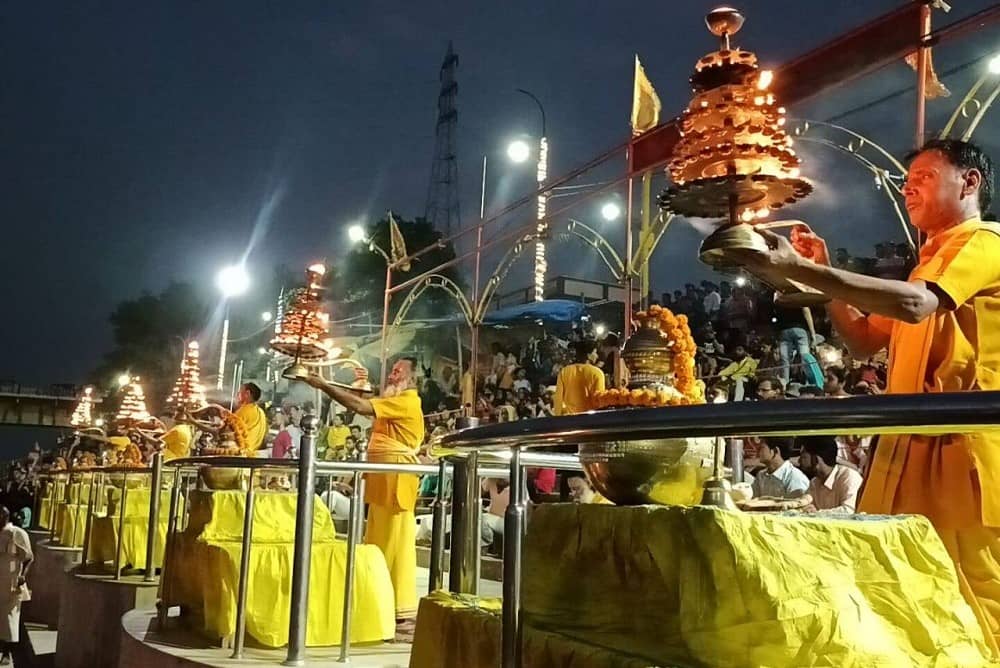
Kabirpanthi Musical Tradition
The city is also famous for its Kabirpanthi musical tradition. This instrument is characterized by the simplicity of instruments like the Iktara and Khanjari. Kabir’s poetry and music have found a home in Ayodhya Uttar Pradesh India, and the Kabir Math of Jiyanpur is a hub for this musical movement, resonating with the liberating force of Kabir’s compositions.
Lakshmana Qila
Lakshmana Qila is the residence of Lord Ram’s younger brother. It is another center of musical fervor in Ayodhya. Saint-poets and philosophers have composed verses and established the tradition of dance and music programs on festive occasions in this opulent palace. This tradition encompasses rasikopasana, and poets like Yugalpriya, Rasikali, and others have contributed to its richness.

Shravan Jhula festival
During the Shravan Jhula festival, Ayodhya comes alive with musical performances, including classical singing, thumri, dadra, khayal, kajri, and bhajan gatherings. The festival is a celebration of the divine union of Lord Ram and Sita, expressed through songs and devotion.
Ayodhya ‘s musical heritage also includes renowned artists like Baba Ramshankardas Pagaldas, bhajan singers like Pt Dayashankar Mishra, and the mehfil and local theater traditions that thrived during the Ayodhya Riyasat period. These artists and traditions have left an indelible mark on the city’s cultural landscape.
Heritage Zone for Walking Tour
Ayodhya Uttar Pradesh India’s heritage zones are rich with historical and religious significance, making them popular tourist destinations. These zones are a testament to the living heritage of Ayodhya Uttar Pradesh India, a city deeply connected to Lord Ram & his birthplace and family home.
- Riverside Heritage Zone: This zone encompasses a collection of ghats and temples, both old and new, along the banks of the Saryu River. It features monasteries, historical structures, and opulent buildings constructed by nobility and prominent residents from the 18th century onwards.
- Ramkot Heritage Zone: In the vicinity of Ramkot, which is the sacred site of Ram Janmabhoomi, this zone includes several ghats and Hindu temples. Strict regulations prohibit new constructions in this area to ensure the security and sanctity of the Ram Janmabhoomi.
- Mani Parvat Zone: This zone is around Mani Parvat. It is an ancient mound dating back to 400 CE. It is famous for the Ram-Sita temple and hosts the annual Shravan Jhula Festival, a vibrant and joyous celebration.
- Hanuman Garhi: Hanuman Garhi is the second-most important temple in Ayodhya, dedicated to Lord Hanuman. It stands near the Ram Janmabhoomi Mandir on the hilly contours of Ramkot. Pilgrims visit Hanuman Garhi to seek Lord Hanuman’s blessings before proceeding to Lord Ram’s shrine.
- Kanak Bhawan: Kanak Bhawan, also known as Kanak Mahal, was initially a gift from Queen Kaikeyi to her daughter-in-law, Sita. It was later rebuilt and is now maintained by the Tikamgarh and Orchha royals. The temple houses idols of Lord Ram and Goddess Sita and is a significant pilgrimage site in Ayodhya.
- Dashratha Mahal: King Dasharatha’s palace: This temple associates Lord Ram’s childhood and early years. It hosts recitations from scriptures and soothing bhajans, becoming lively during various festivals and events.
- Sugriva Quila: It is in the Hanuman Garhi area, Sugriva Quila is a temple famous for its spiritual significance and protective power. This temple can repel and destroy enemies merely by its presence. King Bharata, Lord Ram’s brother, constructed the temple upon Ram’s return to Ayodhya.
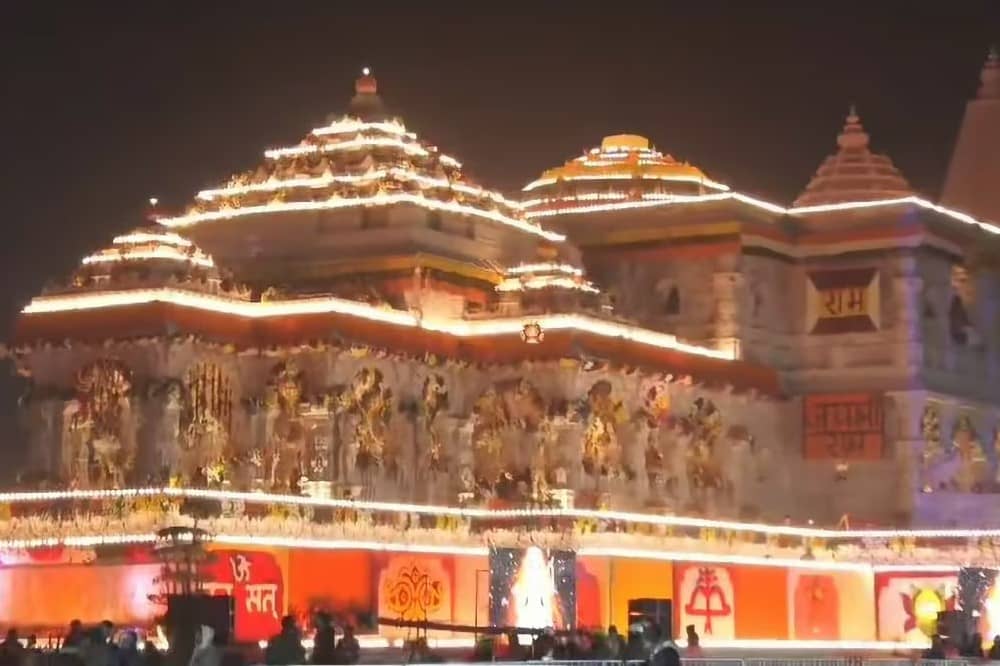
Ayodhya Uttar Pradesh India: some religious and historical sites
- Nageshwarnath Temple: This temple sands for Lord Shiva, often depicted with the serpent king Vasuki. Mahashivratri is a significant celebration here, featuring the grand Shiv Baraat procession.
- Kaale Ram Mandir: It is near Ram-ki-Paidi, this small temple can fulfill one’s prayers. There’s also a Gore Ram Mandir nearby dedicated to the fair-complexioned Lord Ram.
- Mani Parbat: This 65ft-high mound is associated with the Ramayana episode where Hanuman brought the Sanjeevani Buti to heal Lakshmana’s wounds. The mound houses numerous shrines and is a focal point during the Shravan Jhula Mela Festival.
- Tulsi Smarak Bhawan: Built in memory of the 16th-century poet-saint Tulsidas, this building features a well-stocked library with Tulsidas literature and books. It is a valuable resource for researchers and historians and hosts grand celebrations during Tulsi Jayanti.
- Treta-ke-Thakur Shrine: This shrine marks the site where Ram conducted the Ashwamedha sacrifice. It also features idols of Sita, Ram’s brothers, guru Vasishtha, King Sugriva, and Hanuman.
- Sri Kathiya Mandir: This sits near Vasudev Gha. This temple is famous for its grandeur and is close to a cantonment area. It has historical significance related to the ashram of Bharat Das Maharaj.
- Queen Heo Hwang-ok Memorial Park: This memorial park commemorates the ancient connection between India and Korea. Queen Heo Hwang-ok, also known as Suriratna, left Ayodhya for Korea about 2,000 years ago, contributing to the Karak dynasty’s founding. The park symbolizes the historical ties between the two nations.
- Gurudwara Sri Brahma Kund Sahib: Located near Ram Janmabhoomi, this Gurudwara is historically significant as Guru Gobind Singh met with Vaishnavadas to discuss military strategy. It also has ties to visits by Guru Nanak Devji and Guru Tegh Bahadur.
- Valmiki Bhawan: This building dedicates to the author of the Ramayana. The marble walls of the temple are inscribed with shlokas narrating the story of Lord Ram’s life and times.

Ayodhya its surroundings:
- Ram ki Pairi / Naya Ghats: It is on the banks of the Saryu River. This Ghat famous for its mesmerizing views during evening aarti. Legend has it that Lord Ram showed his brother, Lakshmana, the divine beauty of Ayodhya along the riverbank.
- Ram Ghat / Swarg Dwar: This bathing ghat holds significance in Hindu mythology, the place where Lord Ram’s remains were cremated. The view of the ancient buildings on the riverbank adds to its charm.
- Saryu Ghat: The Saryu River is a vital part of Ayodhya’s landscape. It associates with Lord Ram and his family. Pilgrims take ritual baths in the river, considering it a form of pilgrimage.
- Guptar Ghat: This Ghat holds historical and religious importance. It is a site where Lord Ram took Jal samadhi (immersion in water). It is adjacent to ancient temples and serene surroundings.
- Panchmukhi Mahadev Mandir: Established by Lord Ram himself, this temple features a five-faced Shiva idol as well as other shrines dedicated to deities like Sitaram, Radhakrishna, and Hanuman.
- Chakra Harji Vishnu Temple: This temple is famous for its ancient idol of Lord Vishnu holding a chakra and imprints of Lord Ram. It is just near Guptar Ghat.
- Jain Shwetambar Temple: Ayodhya has a rich Jain heritage, and this temple is one of the oldest in the town. It is the first Jain Tirthankara, Sri Adhishvar Bhagwan.
- Janaki Mahal: A beautiful temple and residence of Goddess Janaki. The temple is famous for its cultural and religious significance, and tourists often stay here while visiting Ayodhya.
- Makhaura Dham: Located near Ayodhya, this site holds mythological significance as it is where Raja Dashratha performed the putreshti yajna, resulting in the birth of Lord Ram and his siblings.
- Dashrath Samadhi: This temple memorializes Raja Dashrath, Lord Ram’s father. It also houses statues of Bharat, Shatrughan, and rishi Vashishtha.
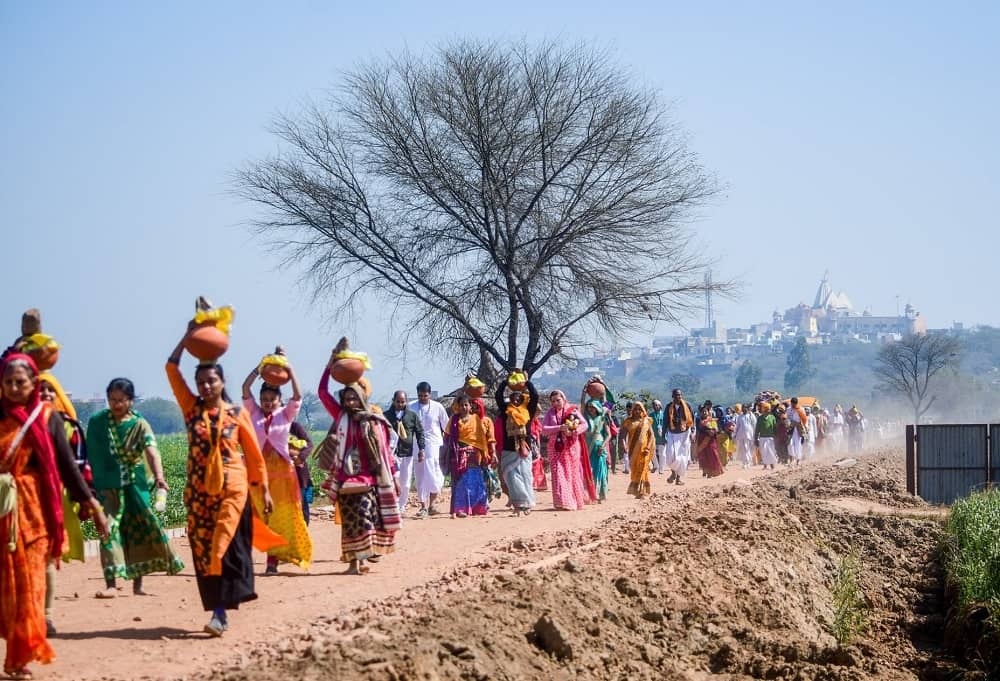
Cultural celebrations.
- Ram Leela: Traditional Ram Leela performances take place throughout the year, with troupes from all over India. The most significant ones are held during the ten days leading up to Dussehra.
- Kartik Poornima: Celebrated on the full moon day of the Hindu month Kartik, this festival sees devotees offering earthen lamps and taking holy dips in the Saryu River. It’s a vibrant and sacred occasion.
- Ram Navami: Observed on the ninth day of Chaitra Navratri in April, Ram Navami marks the birth of Lord Ram. Ayodhya comes alive with temple decorations, processions, and Badhaiya singing.
- Shravan Jhula Mela: Held during the Hindu month of Shravan (July-August), this 15-day fair features swings and processions with images of Lord Ram, Lakshmana, and Sita swinging from tree branches.
- Ramayana Mela: This unique fair, conceptualized by Dr. Ram Manohar Lohia, celebrates the epic Ramayana with folk dance, drama, music, poetry recitation, and other cultural activities.
- Ayodhya Deepotsav: Started in 2017, this grand festival celebrates Deepawali with a helicopter arrival of artistes dressed as Lord Ram, Sita, and Lakshmana. It features a spectacular aarti and lighting of countless earthen lamps.
Some must-try dishes: paradise for food lovers
- Chaat: Indulge in the crispy and tangy street chaat, a favorite among locals and tourists alike.
- Kachori: Savor the spicy and flavorful kachoris, a popular snack made from deep-fried dough filled with various fillings.
- Laddoos: Don’t miss the delightful laddoos, sweet round balls made from various ingredients, often garnished with dry fruits.
- Rabri: Try the rich and creamy rabri, a North Indian dessert made by thickening milk and topped with dry fruits.
- Vegetarian Thali: Relish a wholesome North Indian vegetarian thali, featuring a variety of delicious dishes.
- Dahi Vadas: Enjoy the divine dahi vadas, fried lentil dumplings soaked in yogurt and topped with mint and tomato chutneys, spices, and more.
- Veg Biryani: Delight in Ayodhya’s flavorful vegetable biryani, prepared with fresh vegetables, fragrant rice, and aromatic spices.
Conclusion
Ayodhya Uttar Pradesh India is rich in history and spirituality. Its significance as the birthplace of Lord Ram and its association with the Ramayana make it a place of immense cultural and religious importance. Visitors can explore its ancient temples, vibrant traditions, and rich heritage, making it a must-visit destination for those seeking a deeper connection with India’s cultural tapestry.



